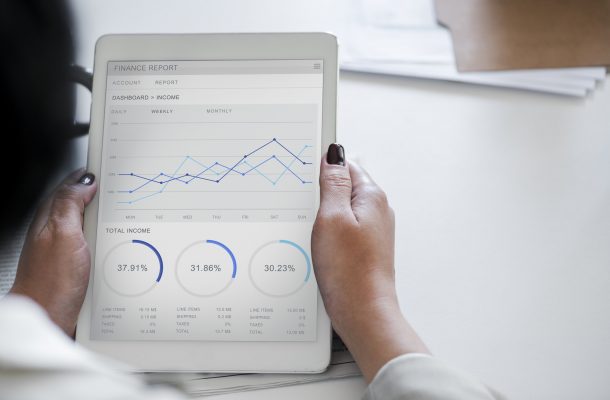Delivering Australia’s digital future

I’m sure all of you will share my belief that it is an exciting time to be involved in Australia’s digital future.
We have all seen that Australians are embracing technology like never before and they expect services – whether they are coming from government or the private sector – to be simple, convenient and easy to use.
It is our responsibility as a government to ensure that we rise to meet those expectations and make sure that we, as a nation, are keeping pace with technological change.
It is also absolutely clear to me that doing so requires us to be a leader in digital transformation.
In the same way that so many industries have been disrupted and transformed by the advent of new technologies, we, as a government, must also seek to disrupt and transform ourselves and the way we engage with, and deliver for, all Australians.
The old ways of doing things, like forcing our customers to do business with us over the counter, must be re-imagined and refined.
In doing so, we are not only improving the lives of our citizens, but we are also making government services more cost effective and – most importantly – ensuring that we are not left behind in a rapidly evolving digital world.
I recently travelled to Europe — in particular Denmark, Germany and Estonia — to engage with my counterparts there who are driving world leading innovations in the delivery of digital government services.
I also met with leaders in the global technology sector, and visited businesses that support the creation of tech hubs, provide resources for entrepreneurs and support start-up communities.
What I saw in those countries was impressive.
For example, the Danish Government has ensured, for many years now, that everyone of its citizens has an online account, not unlike our myGov system, so that all their government correspondence can be conducted electronically.
It may sound like a small advancement, but it ensures that government correspondence is safe and secure, while also saving the country hundreds of millions annually in postage alone.
In Estonia, I learned that there are now only three things that its citizens are physically required to do in person at a government office: registering a marriage, a divorce and a property settlement.
Every other form of interaction with government can be done on line, from birth certificates to taxes, from election voting to starting a business.
You can even become an “e-citizen” of Estonia without ever setting foot in the country.
We need Australia to be amongst these global leaders and this is where we are headed and I’m proud to say we are already a long way down that road.
I have a bold vision for the future of our government and the way we deliver for Australia and today I will be sharing some of our plans with you.
Successes to date
First though, let me start by acknowledging some of our achievements to date, including some that have received international acclaim.
As I departed and re-entered Australia, I used a SmartGate that employed facial recognition technology to quickly facilitate my travel. Between 2016 and 2017, over 24 million passengers used a SmartGate, cutting processing time to as little as 15 seconds.
Those of you who have recently visited the ATO website have likely interacted with their virtual assistant Alex. Alex is available 24/7 and as of 1 March 2018 had more than 2.5 million conversations with ATO clients. As a result of these online interactions, 88% of all issues were resolved on first contact, leading to a reduction of inbound calls by 15 percent.
Working together, my Department – the Department of Human Services – and the Digital Transformation Agency are delivering a modernised myGov user interface to improve user experience.
Usage of myGov has doubled in the past two years with more than twelve million accounts and two hundred and eighty three thousand logins daily.
Digital Transformation Strategy
But if we are to achieve our goals of improving the lives of all Australians, we must challenge ourselves to be better in the way we leverage digital, data and technology to transform government.
We must look at world best practice and learn from it, be it from our own start-ups, industry, academia, local and state governments or other countries big and small, close and far away.
We must do so with a clear vision in mind.
That vision is not to simply emulate other countries, but to be a government that is truly world leading in digital transformation for the benefit of Australia.
This is my vision and I urge you all to help us turn it into reality.
In order to do so, I have asked the Digital Transformation Agency to develop a Digital Transformation Strategy for the Commonwealth that will enable us to achieve our vision by 2025.
The strategy will outline a set of clear goals and next steps for delivering Australia’s digital future, including a focus on important areas such as:
-
Our engagement and service delivery: To make government interactions and engagement easier for both individuals and businesses,
-
Our decision making: To make smarter, more innovative and informed decisions through the use of data and analytics,
-
Our supporting structures and business models: To make government fit for the challenges of the digital age by adapting to new and emerging technology, and challenging the mindset and processes of the APS.
By 2025 Australia will be one of the top three digital governments in world.
If we are to deliver this, we must ensure that the strategy is well supported and offers clear opportunities for both government and industry to engage on it.
We will also set out key activities and clear KPIs and measure progress against them throughout our journey.
To that end, the strategy will be accompanied by a very clear roadmap which sets out when important milestones on this journey will be reached over the next 12-18-24 months across all areas of focus.
The roadmap will identify new and improved services delivered to Australian individuals and organisations, from students and welfare recipients to tax practitioners and businesses, from patients and older Australians to overseas travellers.
In order to develop the strategy and roadmap, I have asked DTA to adopt an agile approach and ensure it is consulting and engaging across all stakeholders.
So far, the DTA has already engaged face-to-face across 30 government agencies, and have canvassed the views of more than 500 stakeholders on digital maturity to explore the opportunities and the possibilities ahead of us.
As a result, DTA has developed the alpha draft of the strategy, which is now being circulated for comments across the public sector.
For those of you interested in being involved in this work, the DTA will also be running consultations with the industry shortly to gather your input to help deliver a bold, yet pragmatic strategy that will truly deliver Australia’s digital future.
I expect that I will be in a position to share the final strategy and roadmap with you in Quarter 3 of this year.
We set a short and exacting timeframe to deliver this but I feel like we don’t have a minute to waste to take advantage of everything the fourth industrial revolution has to offer.
Setting the foundation of our digital future
As we work on building our digital future, it is paramount that we get the foundations right.
Digital government services, whether for people or organisations, must be simple, convenient and easily accessible.
We must ensure user data is secure, private and accurate for the people accessing government services.
At the heart of that, getting digital identity right is absolutely essential.
In a world where most people can’t remember the last time they physically went into a bank, we cannot expect citizens to put up with multiple logins, outdated paper forms and spending time queuing to access services face-to-face.
At the moment the government uses over 30 different logins for digital services.
That is just not good enough.
That is why we are investing over $90 million in this year’s Budget to build a federated digital identity solution as the foundation for our digital future.
Under our digital identity solution, citizens will only need to establish their identity once, and can then use it multiple times to access multiple government services.
Digital identity will be the game changer for how we do business, interact with government and access services.
To provide users with control and choice, we are delivering a federated model, governed by a Trusted Digital Identity Framework.
The framework will ensure that users will be able to verify their identity with their provider of choice from a number of accredited identity providers.
To achieve that, the identity system includes two distinct platforms: the Identity Provider and the Exchange. These platforms will operate to deliver a seamless experience and ensure a user’s identity is protected.
Initially, there will be one Commonwealth Identity Provider (the ATO) who will provide the government’s digital identity, which will be named myGovID.
We are encouraging providers such as Australia Post, and others across the private sector, and state and territory governments, to become accredited.
The sooner more identity providers become accredited, the more choice users will have to establish a secure and reusable digital identity with a provider they trust.
A separate organisation (the Department of Human Services) will operate the exchange (or gateway) between services and the identity providers.
This is key to protecting privacy, as the exchange will act as a double blind – service providers will not see any of the user’s ID information and identity providers will not know what services each user is accessing.
The opportunities this creates are near endless and results will start to be seen immediately.
By the end of next financial year, we will have rolled-out pilot services to over half a million users of government services, targeting high volume transactions that will make a substantial difference to Australians.
For example, at the moment, Tax File Number application forms can be completed online, but then they need to be printed and taken to an Australia Post office along with identity documents to be finalised.
There are 750,000 applications for tax file numbers each year.
With digital identity, the current month long process will be reduced to a few minutes.
Better yet, you won’t even need to leave the comfort of your own home.
A pilot of the end-to-end digital Tax File Number application process will begin in October this year.
Registering a business through the Australian Business Registry will be trialled with 100,000 people, and connecting grants management services will be trialled with 5,000 organisations (and up to 10,000 people) will follow in December 2018.
From March 2019, pilot services that will be connected to digital identity will include Unique Student Identifier, and Centrelink online services – including Youth Allowance and Newstart.
Each year 200,000 enrolments in Youth Allowance support young Australian students and jobseekers. Newstart Allowance allows 790,000 jobseekers annually to access support, with only 38% able to access these services online.
Both of these pilots will make it possible for 100,000 people to access Newstart and Youth Allowance services online.
Also from March 2019, a pilot of My Health Record will allow 100,000 people to use their digital identity to create their My Health Record online.
In total, these pilots will enable approximately 2.8 million transactions to move from manual to digital.
While the benefits to those who use those services is obvious, so are the benefits to government.
A face-to-face or over-the-counter transaction costs on average about $17 to process. An online transaction can cost less than forty cents.
To help you do the math, Australian governments process about 800 million transactions a year.
If digital identity is the foundation for building Australia’s digital future, these services are the first building blocks for transforming the way we engage and provide services to people and organisations.
That is because digital identity is not just a whole-of-government effort but a whole-of-economy solution.
As such, genuine engagement across all sectors is essential to build a framework that provides rigorous standards for ensuring the security, accessibility, privacy and trust of the identity system.
We know that private sector organisations, including financial institutions and utilities, are large custodians of identity data and have a wealth of knowledge about delivering identity services.
We know that academics, privacy advocates, industry groups, and state and territory governments have also been thinking and working on fraud control, privacy, and security of data.
We have been working closely with such organisations during the development of the Trusted Digital Identity Framework to learn from their experiences and inform the standards, processes, and policies that will lay the foundations for the digital identity system.
As a result of this work, late last year, we released the first component of the Trusted Digital Identity Framework for feedback.
This component outlined the standards of online identity services for individuals, including fraud control, privacy, security and identity proofing standards.
We received over 1,000 comments, which have assisted us to refine the Framework.
Thank you to all of you who have played a part in shaping this.
We will continue to consult on elements of the policy to ensure we are building a solution that is best practice and meets community expectations.
Today, I am releasing the next component of the Framework for public consultation. This component outlines how a digital identity can be created through an off-line process.
Later this year we will release a third and final component to authorise individuals to act on behalf of a business.
Consultation on the second component will be open until 12 July 2018.
I encourage you to contribute to the Framework through the DTA, and participate in ongoing conversations as we roll out this initiative.
Delivering the building blocks for our digital future
While we are building the foundations of our digital future, we are also investing in delivering better digital services for citizens today, including in my own portfolio, by improving the way $115 billion in welfare payments are delivered to over 76 million people each year.
We are embarking on one of the largest system upgrades in the federal government as part of the Welfare Payment Infrastructure Transformation Program (or WPIT), to improve the way welfare payments are made by making it faster and easier to process and manage claims.
Early tranches of WPIT have reduced the time taken for students to submit a claim for assistance (Youth Allowance) from 36 to 12 minutes, and in the last year alone claim processing times have decreased from26 days to around 15 days
This builds on earlier improvements achieved through WPIT where processing times went from an average of 9 weeks to 5.
We are investing more to further improve these outcomes.
The Budget included $316.2 million to extend these improvements to other payments. Those claiming job seeker, age and disability pensions, and carer payments will be the next to reap the benefits from this digital transformation.
We are also exploring innovative ways to securely and efficiently deliver government services, using technology such as blockchain, artificial intelligence and data analytics.
The potential of blockchain to securely record transactions is now being investigated by a number of public and private organisations.
The Australian Stock Exchange is rolling out a blockchain-based replacement for its post trade settlement system (CHESS).
In my home state of Western Australia, the government has provided a grant of $8 million to the City of Fremantle to trial the use of a blockchain-powered distributed energy and water system.
To understand the potential of blockchain for government payments, we are committing $700,000 dollars over the next financial year to investigate options to make use of this technology.
Improving the return on investment for ICT Services
These are some of the buildings blocks of the digital future and we are committed to continue to invest to deliver on our vision.
However, we cannot go at it alone.
We need to be able to engage closely with partners and suppliers to access the best tools, technologies and skills available to deliver benefits and value to individuals and organisations.
We will continue to closely work with Australian businesses, start-ups and government clients to ensure the digital marketplace capability continues to grow and provide best value for Australian government in the rapidly-evolving digital services sector.
We spend more than six billion dollars of taxpayers’ money on ICT and digital services each year, and we want to make sure that more innovative Australian businesses can get a share of this.
Small and medium businesses have made it very clear that breaking into the government procurement sector is hard.
We are changing the way government buys ICT products and services – and working on a series of reforms to make it easier for small and medium businesses.
This will result in simplified processes and consolidate whole-of-government buying, enabling us to access better skills, better technologies and more innovation to deliver benefits sooner and to more users.
Digital Sourcing Framework
While value for money will always play a part in how government buys any product or service, we recognise the importance of future-proofing our procurement processes.
Today, I’m releasing a new Digital Sourcing Framework.
This framework is the result of extensive consultation across government and the private sector undertaken since the ICT Procurement Taskforce Report was released in August last year.
The framework released today delivers on Recommendation One of the taskforce report, reflecting the need for government to deliver digital services that are simple, clear and fast.
Central to the framework is a set of principles to achieve a fair, effective and efficient ICT procurement process.
The principles are about:
-
encouraging innovation and iteration;
-
being outcome focused;
-
using open standards and cloud first approaches;
-
preventing platform duplication, and
-
minimising cybersecurity risks.
We will also maintain our focus on bringing more opportunities to small to medium enterprises who have made it very clear that doing business with government can be challenging at times.
Sitting below the principles are a number of policies, guidance tools and information.
Capped Term and Value Policy
The policies include the Capped Term and Value Policy that we implemented last year to encourage competition and limit major ICT expenditure to not exceed $100 million per contract or a three-year initial term.
There was a compelling need for this policy change – ten ICT vendors accounted for 43% of the dollar value of the government’s ICT spend.
Capping the value of contracts means SMEs are then able to compete more effectively and engage directly, rather than as a subcontractor.
With your help we’ll be reviewing the effectiveness of this policy later in the year.
Portfolio Panel Policy
As part of the new Digital Sourcing Framework, today we are also releasing for consultation a discussion paper on a new draft Portfolio Panel Policy.
It looks at existing government panel arrangements and aims to remove some of the burdens currently faced by sellers when engaging with government.
Inconsistencies in terms and conditions, contract management, pricing and reporting arrangements is some of the feedback I have heard about government panels that causes confusion for both buyers and sellers.
This policy will focus on reducing the number of panels, opening up and simplifying the process to join them, and encouraging more opportunities for collaboration and co-design with buyers and sellers.
Fair Criteria Policy
In the period ahead we will be releasing the Fair Criteria Policy, providing guidance across the end-to-end procurement process that buyers and sellers must undertake.
This policy will include considerations such as insurance, liability, security, and financial criteria.
The aim of this policy is to even the playing field for sellers of all sizes and encourage competition.
Digital Marketplace
Finally, on procurement, let me reflect on the Digital Marketplace.
Our Digital Marketplace was launched to better connect small businesses with government buyers.
$125 million worth of contracts have been awarded through the marketplace but we know there is more to do.
We’ve recently made updates to its functionality based on your feedback, and we will continue to closely work with businesses, start-ups and government buyers to ensure the digital marketplace remains fit for purpose and provides best value for Australian government in the rapidly-evolving digital services sector.
To assist with capability building across the public sector, the DTA will be expanding the Digital Marketplace (Marketplace) with a new Training Marketplace to be launched towards the end of the month.
The Training Marketplace will give government buyers more focus and flexibility to source the training and development expertise they need from the Marketplace. Buyers will be able to source qualified sellers to build digital capability within their respective areas.
This means that the new Training Marketplace will also provide sellers with greater opportunities to provide training services to government. It also supports the broader upskilling of digital capability to drive transformation efforts across government.
In the spirit of the new Digital Sourcing Framework, we will continue to iterate and innovate on the principles, policies and guidance products I have outlined today.
As new technologies and ways of working emerge, our ways of buying them may need to change, and we need to be flexible to these needs.
I encourage you to engage with DTA on these consultations and thank you for continuing to be such an integral part of shaping this important reform work.
Next steps
In closing, I want to reiterate my commitment to delivering Australia’s digital future.
Australia will be a world leader that other nations can look to for guidance and inspiration.
From tax to welfare, entering the country or having a baby – we are changing the way citizens interact with government.
Our modern, innovative, growing economy needs to be able to harness the opportunities of data and digital in order to continue to thrive.
In the coming months, we will make public our strategy and roadmap for the next steps in our digital future journey.
This is our vision and we will work tirelessly to make it a reality.
The Hon Michael Keenan delivered this address to the Australian Information Industry Association at the National Press Club in Canberra.
The Hon Michael Keenan MP is the Minister for Human Services and the Minister Assisting the Prime Minister for Digital Transformation.








